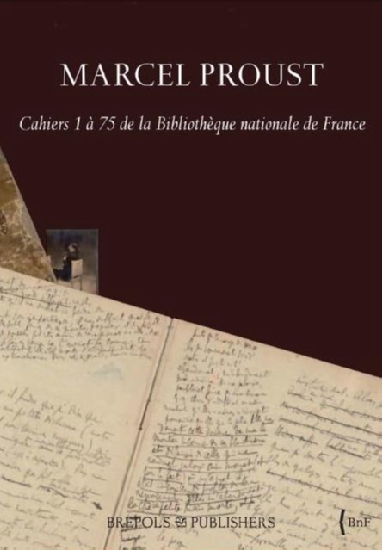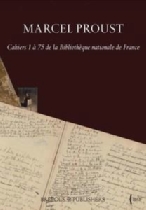MARCEL PROUST
Cahiers 1 à 75 de la Bibliothèque nationale de France
Marcel Proust collection conserved in the 'Manuscrits' department of the Bibliothèque nationale de France (French National Library) was started in 1962 and completed in 1984 and is remarkable for its exceptional richness.
Seventy-five school exercise books used by the author between 1908 and his death in 1922 represent its centre piece. Their approximately eight thousand hand-written pages have played a central role in generating the unfinished part of À la recherche du temps perdu and bear witness to the most extraordinary intellectual and creative adventures of the 20th century. Currently, barely a quarter of the works have been published in a simplified format. Today's project is to progressively publish the entire contents.
Cahiers 1 à 75 de la Bibliothèque nationale de France has been prepared by an international team that brought together twenty specialists. The editorial committee consists of Nathalie Mauriac Dyer, director (CNRS); Bernard Brun (CNRS); Antoine Compagnon (Collège de France); Pierre- Louis Rey (Université de la Sorbonne Nouvelle-Paris III); Kazuyoshi Yoshikawa (Kyoto University). Florence Callu, Jean Milly, Michel Raimond and Jean-Yves Tadié make up the committee of honour.
Each cahier will result in two volumes :
• Volume I
will contain a facsimile of the manuscript in its original format.
will contain an exhaustive diplomatic transcription and a rich critical analysis.
The two complementary volumes will provide an appreciable comfort read and contain an amount of information that is unprecedented in the study of Proust.
The collection's objectives are at least triple. Firstly, it's to provide access, which is as complete and as informed as possible, to each hand-written cahier with its thematic individuality - cahier 'Sainte-Beuve', cahier ‘Combray', cahier ‘Filles', cahier ‘Guermantes', etc. Secondly, it's to place each cahier in the dynamic context of its creation and indicate, sheet by sheet (and often with even greater precision) the use that Marcel Proust had made and/or would make of its content. Thirdly, it's to allow the reader to compare the pages of the different cahiers to evaluation such and such a change by the author by retracing, in some ways, the writer's own journeys; When they are brought together, the diverse index of genetic links will help prepare a systematic mapping of the re-writes; a mapping that bears witness through its density to the 'vie vertigineuse' of Proust's creative process.



